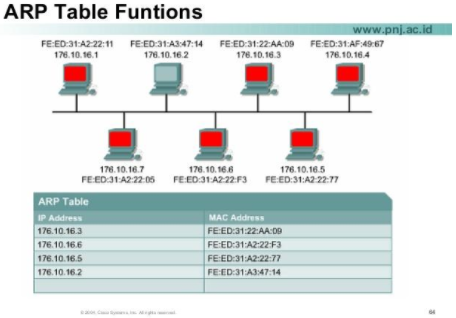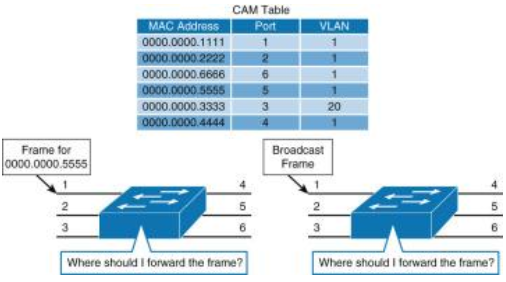ARP and CAM Table
ARP Table
Address Resolution Protocol (ARP) is a protocol for mapping an Internet Protocol address (IP address) to a physical machine address that is recognized in the local network. A table is used to maintain a correlation between each MAC address and its corresponding IP address. ARP provides the protocol rules for making this correlation and providing address conversion in both directions.

Source: www.pnj.ac.id
CAM Table
Content Addressable Memory (CAM) table is a system memory construct used by Ethernet switch logic which stores information such as MAC addresses available on physical ports with their associated VLAN Parameters. The CAM table, or content addressable memory table, is present in all switches for layer 2 switching. This allows switches to facilitate communications between connected stations at high speed and in full-duplex regardless of how many devices are connected to the switch. Switches learn MAC addresses from the source address of Ethernet frames on the ports, such as Address Resolution Protocol (ARP) response packets.

Source: http://www.ciscopress.com/articles/article.asp?p=2348265&seqNum=2
Protocols vulnerable to sniffing
Telnet and Rlogin: Keystrokes including usernames and passwords.
HTTP: Data sent in clear text.
SMTP: Passwords and data sent in clear text.
NNTP: Passwords and data sent in clear text.
POP: Passwords and data sent in clear text.
FTP: Passwords and data sent in clear text.
IMAP: Passwords and data sent in clear text.